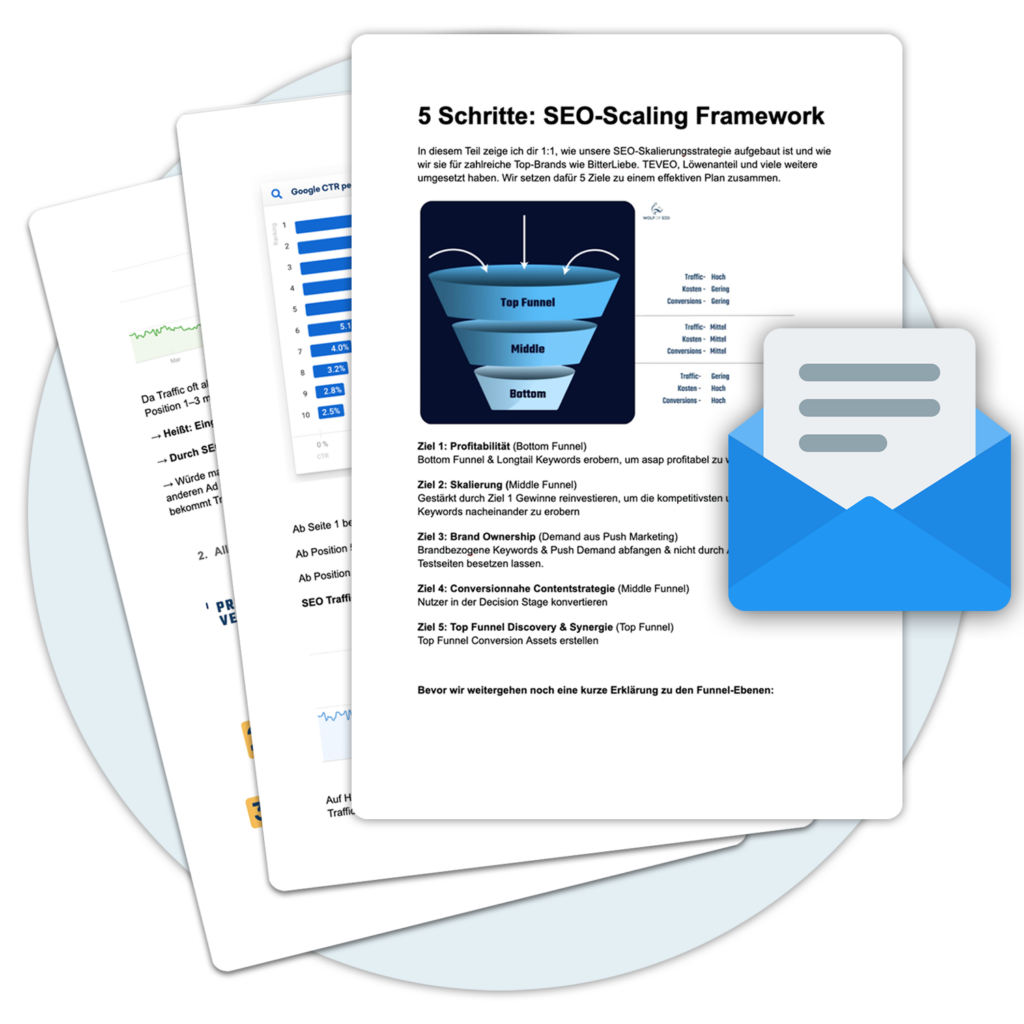Introduction to Google Ads Remarketing
Google Ads Remarketing is a powerful way to retarget users who have already interacted with your website or app. By retargeting these visitors with advertising campaigns specifically tailored to them, this feature allows you to keep your potential customers in mind and win them back at key moments. The basis for this is an intelligent use of data that tracks user behavior and interests and uses them for targeted marketing strategies.
The process begins with the integration of a remarketing tag on your website or app. This tag, a small text file (or cookie), helps collect valuable information about visitors. This data allows you to categorize visitors into different lists based on their behavior and areas of interest to maximize the effectiveness of your advertising campaigns. By targeting these lists with relevant ads, you aim to increase conversion rates by motivating former website visitors to take an action - be it buying a product, signing up for a newsletter or any other desired action.
With the right application and fine-tuning of your remarketing strategies, you can not only boost your brand's visibility, but also achieve higher user engagement and customer loyalty. To support this process, Google offers a variety of resources and tools, such as Google Analytics 4, which provide you with insights into user behavior and help you optimize your advertising measures.
By combining the different types of remarketing in Google Ads consistently - from standard remarketing and dynamic remarketing to specialized formats such as video and mobile app remarketing - you open up new ways to reach your target groups more effectively and with a higher probability of conversion. Each of these methods has its own characteristics and areas of application that need to be understood in order to realize the full potential of Google Ads Remarketing to be exploited.
Understanding the remarketing tag
A fundamental tool in the implementation of Google Ads Remarketing is the so-called remarketing tag. This is a small snippet of code that is embedded on all pages of your website or specific pages. This tag plays a central role in collecting data about your website visitors and their behavior, which can then be used for remarketing.
The tag collects information by setting a Cookies at Browser of the user. This cookie contains a unique ID that identifies each visitor individually and makes it possible to recognize them at a later date via the Google Ads-platform with targeted advertising. The information collected by the remarketing tag is essential for creating remarketing lists that define which users are to be reached again with which type of ads.
Setting up the remarketing tag
The setup of the remarketing tag starts in your Google Ads-account, where you will find the necessary conversion ID. This ID is crucial as it is the bridge between the tag on your website and your Google Ads-account. Optionally, a conversion label can be added to track even more specific actions. It is important to carry out this process with care, as this is the only way to collect relevant data that will later form the basis of your remarketing campaigns.
Technical aspects
From a technical point of view, the tag is usually stored as a small text file or cookie in the Browser of the user. Once integrated, the tag records various data, such as the pages visited or the time spent on the website. This data helps to develop a deeper understanding of the interests and behavior of users and enables more precise segmentation for targeted advertising campaigns.
Use of the remarketing tag
The effective use of the remarketing tag enables advertisers to build a bridge to previous visitors to their website. Instead of generic advertising, the needs and interests of the target group can now be precisely addressed. This usually leads to a higher engagement rate and improves the chances of successful conversions. By precisely targeting ads, advertisers can ensure that their marketing budgets are used efficiently by only showing ads to those users who have already shown some interest in the products or services on offer.
The key to maximizing the success of remarketing campaigns lies in the precise and careful handling of the remarketing tag as well as the continuous adjustment and optimization of the target group lists based on the collected data. This process is dynamic and requires continuous analysis and adjustment to ensure that the right users are reached with the right message at the right time.
Variants of remarketing in Google Ads
Within the world of Google Ads remarketing opens up a wide range of opportunities to respond specifically to the needs and behavior of website visitors. Each variant of remarketing pursues the goal of reaching users in a specific way and optimally placing the advertising message to ensure maximum effectiveness.
Standard remarketing
With standard remarketing, ads are placed on websites within the Google Display Network. This form targets users who have already visited your website by showing them ads while they are visiting other websites. It acts as a reminder of your products or services and helps to reignite users' interest.
Remarketing for the search network
This method allows you to retarget users who make further searches on Google after visiting your website. By displaying your ads in the search results when these former visitors search for similar products or services, you increase the chance that they will return to your website.
Dynamic remarketing
Dynamic remarketing goes one step further by personalizing the ads based on the products or services that users have viewed on your website. This type of ad is an even more targeted approach as it is specific to the user's interests, increasing the likelihood of conversion.
Video remarketing
This strategy refers to users who have watched your videos or interacted with your YouTube channel. Video remarketing allows you to retarget these people with ads on YouTube or the display network. It uses the strong visual component of videos to build a deep connection with the user and strengthen the memory of your brand.
Mobile app remarketing
With mobile app remarketing, the focus is on reaching users who have used your app. By placing targeted ads on other apps or on the web, you can encourage users to use your app again or perform certain actions in it. It is particularly suitable for increasing user retention and strengthening loyalty to the app.
By addressing specific needs and behaviors of the target group, each of these remarketing variants offers effective levers to increase advertising success. The key is to choose the methods that best suit your own business and marketing objectives and to integrate them optimally into the overall strategy.
Advantages of remarketing campaigns
Remarketing campaigns via Google Ads offer numerous advantages that can significantly increase the efficiency and effectiveness of digital advertising strategies. Targeted retargeting of previous website visitors provides tailor-made opportunities to increase conversion rates and improve the return on investment (ROI) of campaigns.
Increased conversion rates
A key advantage of remarketing is that it reaches potential customers at a more advanced stage of the purchase decision. Visitors who have already interacted with your brand are often more likely to proceed to the final purchase stage. By presenting these users with specially tailored ads, the likelihood of a return visit and a final conversion can be significantly increased.
Increased user engagement
Remarketing also promotes interaction between brand and consumer. Precise targeting based on previous interactions, whether through page visits or specific product views, allows ads to be created that are highly relevant to the user. This leads to more intensive engagement with the content, products or services on offer, strengthens brand loyalty and ultimately promotes a positive brand experience. User Experience.
Targeted advertising with a wide reach
With Google's global network, remarketing ads can be placed on a large number of platforms and websites, allowing for an immense range of advertising opportunities. Range is guaranteed. Whether in the Google search network, on YouTube, in mobile apps or on partner sites - precise targeting makes it possible to address precisely those users who have already shown an interest in your products. This targeted approach minimizes wastage and ensures that advertising budgets can be used more effectively.
Flexibility and adaptability
The comprehensive configuration options in Google Ads allow remarketing campaigns to be set up exactly as required. From choosing the right time and defining the target group to the specific design of the ads - all these components can be fine-tuned to optimize the success of the campaign. The ability to respond to user feedback in real time and adjust campaigns also contributes significantly to the flexibility and efficiency of remarketing.
Overall, remarketing campaigns offer a powerful set of tools to build connection and trust with potential customers, maximize ROI and ultimately significantly increase sales. Through intelligent targeting, creative ad design and continuous optimization, remarketing allows advertisers to be targeted and effective.
Optimization of remarketing campaigns
Optimizing remarketing campaigns is an ongoing process that allows advertisers to ensure they are reaching the right users at the right time and in the right way. By making targeted adjustments and continuously testing different strategies, the effectiveness of campaigns can be increased and better results achieved. Below are best practices and techniques that can help fine-tune your remarketing efforts.
Frequency Capping
An important tactic in the optimization of remarketing campaigns is the so-called Frequency Capping. It allows you to limit the number of times a user sees your ads within a certain period of time. Too many impressions can lead to ad blindness or even negative reactions, while too few could minimize the effectiveness of your campaign. By finding the right balance, you ensure a more present but non-invasive ad placement.
Use of various lists
Using diversified remarketing lists is another key to campaign optimization. By segmenting users based on their behavior or interests, you can create more specific ads that drive higher engagement rates. For example, a list for users who have abandoned a purchase can be used to win them back with targeted offers or reminders. Another list could target those who have signed up for a newsletter with the aim of strengthening brand loyalty.
Experimenting and measuring results
Testing different approaches and carefully analyzing the results are crucial for optimizing remarketing campaigns. A/B testing, for example, where two versions of an ad (A and B) are compared to see which performs better, is an effective way to understand target audience response and evaluate the effectiveness of individual elements such as CTA buttons, ad copy or images. The insights gained can then be used to improve future campaigns.
Measuring the success of your campaigns by tracking conversions is also essential. You should pay attention to an exact allocation of conversions in order to get a clear picture of which remarketing activities contribute to success. Tools such as Google Analytics offer a comprehensive range of measurement methods that enable not only the analysis of conversions, but also of micro-conversions (smaller actions that can lead to a conversion).
By continuously applying these strategies and constantly adapting them to the insights gained, the performance of remarketing campaigns can be significantly increased. Ultimately, the aim is to refine the campaigns so that they both meet the interests of the target group and support the company's objectives in an effective and efficient manner.
Creation and use of remarketing lists
The careful creation and use of remarketing lists is at the heart of effective remarketing strategies in Google Ads. These lists enable advertisers to target users who have already interacted with their website or app. They provide the basis for personalized advertising campaigns that aim to get these users to return and ultimately convert them into customers.
Basics of list creation
The creation of remarketing lists starts with embedding the remarketing tag on your website or linking your app to Google Ads. This tag collects information about visitors and their behavior. Based on this, you can create lists based on specific criteria. For example, lists can be created for users who have visited certain pages of your website, viewed certain products but not completed the purchase, or who have left your site after a short time. The precise definition of your target groups is crucial to maximize the effectiveness of your campaigns.
Differentiation of target groups
You can become even more specific by using user-defined combination lists. For example, you can separate users who have added a product to their shopping cart but have not completed the purchase process from those who have only searched for information. The ability to segment users based on their engagement and buying interest allows a highly personalized approach. Enhanced with dynamic remarketing, ads can even highlight individual products or offers based on the user's previous interactions.
Optimization and strategy
Continuously analyzing and adapting your remarketing lists is essential for the long-term success of your campaigns. Use the data and insights from user behavior to refine your lists and improve target group segmentation. Also take data protection regulations into account and ensure that users are appropriately informed about the use of Cookies are informed and have given their consent. By regularly updating and adjusting the lists, you can ensure that your remarketing ads remain relevant and targeted.
Through the effective use of remarketing lists, brands can significantly increase their recognition and efficiently lead users back to their platform. The art lies in precise segmentation and targeting, which makes it possible to develop customized ad campaigns that truly resonate and convert.
Integration with Google Analytics 4
Integration with Google Analytics 4 (GA4) represents an important step towards realizing the full potential of Google Ads Remarketing to exploit the full potential. GA4 offers a comprehensive range of analytics capabilities that allow advertisers to gain deep insights into the behavior and interests of their users. This information is crucial for creating targeted remarketing lists and maximizing the effectiveness of campaigns.
Setup and data integration
Setting up seamless data integration starts with connecting the Google Ads-This link enables the automatic import of conversion data and the creation and updating of audience lists directly in GA4, which can then be used for targeted remarketing campaigns in Google Analytics 4. Google Ads can be used. In order to successfully carry out this integration, it is crucial that the correct tracking implementation is ensured on the website or in the app. This includes setting up specific events to be considered as conversions and defining parameters that describe user behavior in more detail.
Segmentation and audience creation
With the help of GA4, website visitors can be segmented based on a variety of criteria, such as demographic characteristics, behavior, purchase activity or interaction with specific content. This segmentation capability makes it possible to create highly specialized audiences that can then be used for precise remarketing. This ensures that ads are only shown to users who are highly likely to be interested in certain products or services and act accordingly.
Optimization strategies through insights into user data
The advanced analysis functions of GA4 give advertisers access to valuable data on the effectiveness of their remarketing strategies. This includes not only information on the number and quality of conversions, but also on the path users take to conversion. These insights enable the continuous optimization of campaigns by showing which aspects of the remarketing strategy are successful and where there is room for improvement. For example, it can be determined which remarketing approaches achieve the highest engagement rate or the best ROI, and which messages or offers are particularly well received by the target group.
The integration with Google Analytics 4 therefore offers significant advantages for the implementation and optimization of Google Ads Remarketing-campaigns. Thanks to the detailed analysis of user behavior and the resulting customization options, advertisers can tailor their campaigns to the needs of their target group, improve performance and ultimately increase the success of their campaigns. Online Marketing-efforts.
Additional resources for support
In order to provide advertisers with the best possible support in the implementation and optimization of their Google Ads Remarketing-campaigns, Google provides a variety of resources. These tools and guides are designed to deepen understanding of remarketing, provide practical steps for implementation, and teach advanced strategies to maximize campaign success.
Google Analytics 4 help page
The Google Analytics 4 help page is an essential resource that provides a wealth of information, videos and articles. It covers a wide range of topics, including setting up and using GA4, integrating with Google Ads and the creation of remarketing lists. This content is specifically designed to help users understand the full potential of GA4 and facilitate the use of the platform to increase campaign performance.
Interactive processes and learning resources
In addition to detailed instructions, Google offers interactive workflows that guide you step-by-step through the process of campaign creation, optimization and analysis. These practical resources are particularly valuable for beginners, but advanced users can also benefit from the in-depth insights and tips. By directly applying what they have learned, advertisers can develop and implement more effective remarketing strategies.
Access to community and expert opinions
Integration into a community of like-minded people and experts can offer considerable added value. The Google Analytics Discord channel, blogs, the official YouTube channel and the GitHub repository are platforms where users can exchange ideas, ask questions and learn from the experiences of others. Here, advertisers can find support, inspiration and the latest updates on Google Ads and Google Analytics. These communities offer an excellent opportunity for ongoing training and keeping up with the latest trends and best practices.
These resources are an integral part of the support structure for advertisers. By utilizing these diverse offerings, companies can deepen their knowledge, overcome technical challenges and achieve their marketing goals more effectively. By staying abreast of the latest information and strategies, the benefits of Google Ads Remarketing and strengthen your own online presence in the long term.
« Back to Glossary Index






